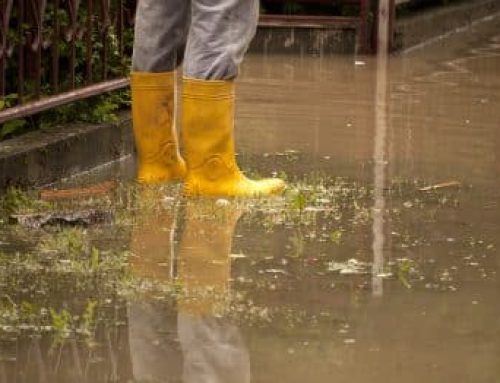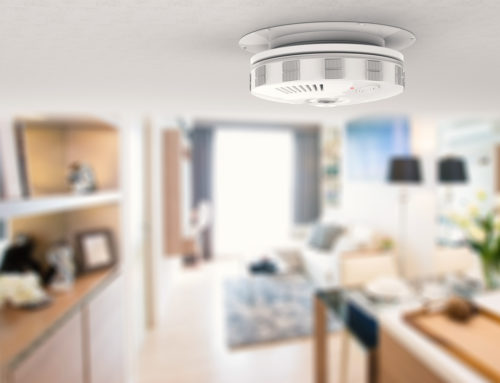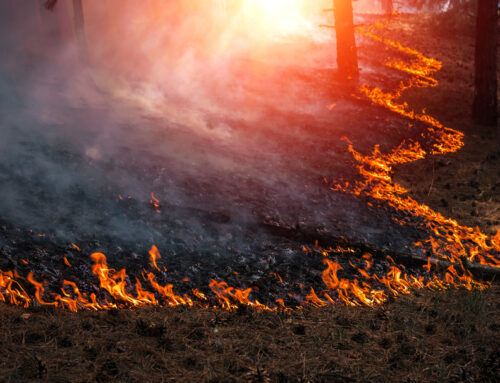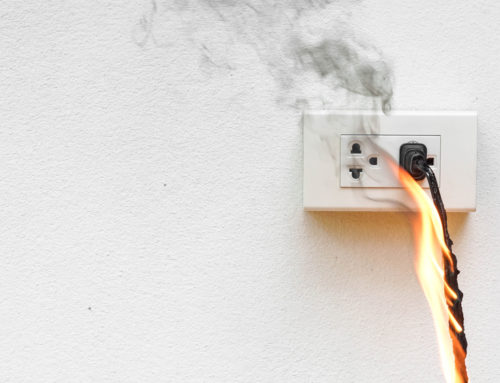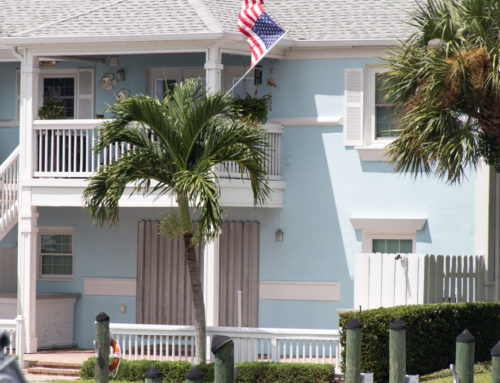While some regions of the United States have already received their first snows and freezes, it’s never too late to start prepping your property for winter risks. In this two-part series, we’ll look at the most common winter perils and how to mitigate damage. Here, in part 1, we address ways to protect occupied properties.
* Part 2 is now available, click here to read it!
Theft & Security
The threat of theft is higher with unoccupied properties rather than occupied ones. However, that doesn’t mean you shouldn’t prepare your tenants. During the holiday season, burglaries are on the rise. Thieves see an opportune chance to break in when people are visiting family out of town. Plus, more gifts and cash are lying around during this time for them to easily steal. Avoid property damage and tenants’ belongings being stolen by sharing these tips with your renters:
- Make sure all exterior doors and windows are locked. Stick a wooden dowel in the bottom of sliding doors and windows to make them harder to open.
- Shut all blinds and curtains so burglars can’t see if the property is occupied and what’s in it.
- Set timers on interior lights to turn on lights during the evening hours and make it appear like the property is occupied.
- Have a trusted neighbor stop by to pick up mail and tend to any lawn care needs.
Move-outs
For trusted renters, move-outs can be fairly simple. You’ll want to do a final walk-through at the property to make sure everything is locked and all keys are returned. However, no matter how trusted the renter was, monitoring the property more closely during its vacancy is important. There may be others in the neighborhood looking for a place to find shelter or hide illegal drug activity. But, more on that in part 2.
If you’re having to go through an eviction with a current tenant, handling the situation properly can save you from a potential break-in. Tenants who leave on bad terms may be looking for revenge and want to damage your property. They may also be looking to steal items to make a quick buck. You’ll want to closely monitor the property during and after move-out. Depending upon the situation, you may even want to have the local sheriff present to assist you. In cases like these, changing locks quickly can also be extremely beneficial. You never know if the tenant made key copies.
If you’re trying to avoid an eviction, helping your tenant make a graceful exit through Cash-for-Keys may be an option. Cash-for-Keys may help your renter get to their next living situation more quickly and lessen any potential animosity they could have had toward you. It may also be cheaper than paying an attorney for an eviction.
Related Reading: 8 Great Ways to Protect Vacant & Renovation Properties
Water Damage
One of the most frequent winter losses we see at investment properties is burst pipes. The amount of catastrophic damage a water leak can do in just minutes can be astounding. Aside from damaging a tenant’s belongings (for which they may hold you responsible), a pipe burst can ruin sheetrock, trim, and flooring and often leads to mold growth if the damaged areas are not quickly dried out. Though it may take a bit of effort, the steps to preventing a burst pipe are simple and can help you avoid an emergency maintenance call followed by an expensive water remediation bill.
Insulate pipes, especially those on exterior walls. Don’t forget water lines that lead to a garage sink or that run to your hose on the outside of the house. Hose bib covers can also help prevent outdoor spigots from freezing.
Also, remember that insulation does not generate heat. Make sure your HVAC system is in good working order and heats the whole house adequately. If you haven’t done an annual check-up of your HVAC system yet, get one scheduled before your tech’s schedule fills up!
Lastly, your tenants can be instrumental in preventing a freeze. Before a cold snap, remind them to:
- Open cabinet doors below sinks to allow warmer air to circulate through those areas.
- Leave faucets on a slow drip. Allowing water to flow through the pipes continuously may help prevent it from freezing.
- Keep the heat above 55 degrees. Some may be tempted to save on a heating bill by turning the thermostat down, but then may also bring the property back up to temperature using space heaters or may even use the oven as a heating source. Both can be dangerous ways to heat a home. We will discuss that more later.
Fire Damage
About as frequent as water losses, fires are among the costliest losses to investment properties. In the process of burning the property, fires often lead to serious injuries or in some cases, death of the occupants as well. For this reason, fire prevention is of the utmost importance. Though fires can start in a variety of ways, two types of fires are top of the list when it comes to winter. What are they and how can they be prevented?
Cooking Fires
More cooking fires occur on Thanksgiving than on any other day of the year. Following close behind are Christmas Eve and Christmas Day. (National Fire Protection Association) Entertaining guests can take a cook’s attention away from the large meal they are preparing which is most often how a cooking fire occurs – a distraction that leaves food unattended on the stovetop. Grease fires can also happen if a pan gets too hot in a cook’s absence. How to avoid a cooking fire since you aren’t usually a dinner guest?
- Regular inspections – these give you an opportunity to make sure there aren’t any maintenance items that your tenant hasn’t already reported to you. It also helps you to ensure that your tenant isn’t creating a fire hazard with the way they keep the property.
- Smoke and CO alarms – maintaining working smoke alarms are typically part of the fire code, and often a requirement of your insurance policy. At your regular inspections, make sure tenants haven’t disabled these and that they are in working order. Change batteries at least twice a year and replace the alarms themselves every 10 years. Working smoke alarms cut home fire deaths in half (NFPA). Carbon monoxide alarms are also important for keeping your tenants safe. CO is odorless, colorless, and tasteless, which is why they call it the “silent killer.”
- Fire Extinguishers – along with alarms, make sure you have extinguishers in all common areas, such as hallways, the living room, kitchen, basement and garage. Follow the manufacturer’s instructions for maintenance and make sure your tenants know how to use them. Extinguishers can keep a small fire from becoming a larger, more dangerous, and more destructive one.
- StoveTop FireStop – this inexpensive fire suppression product can help put out a stovetop fire before the cook has time to grab a lid or standard extinguisher. Should a fire occur, StoveTop FireStop is positioned right above the burners and ready to deploy fire suppression powder right onto the flames automatically. There is also a loud “pop” when the container opens, alerting the distracted cook to return to the kitchen and turn off the stove.
- Share this cooking safety checklist with your tenants: 10 Quick Cooking Tips for a Safe Thanksgiving
Related Reading: Cooking Fires: The Most-Preventable Household Killer
Heating Fires
Many fires we see in occupied properties are related to tenants using space heaters or other alternative heating methods to stay warm in their homes. To reduce this temptation:
- Make sure your rentals are heated appropriately – Some jurisdictions require that a home be kept to a certain temperature for housing to be considered “habitable.”
- Stay on top of regular maintenance – HVAC systems should be inspected before the heater is used each season. If it hasn’t been done already, do it now.
- Change furnace filters monthly – Who is responsible for changing them? If it is your tenant, make sure they are staying on top of this responsibility. It can impact the air quality, but more importantly, can create a fire hazard.
- Ban using ovens to heat the house – Specify in your lease that heating the house with the oven is not allowed and educate tenants on the dangers of doing so, like the risk of CO poisoning.
- Regulate the use of space heaters – If you allow space heaters, they should be newer with a safety feature that turns the heater off if it is tipped over. Instruct tenants to keep 3 feet of clear space around the heater. They should also be kept far away from blankets, drapes, anything that can burn and should never be left unattended.
- Maintain chimneys – Your chimney should be inspected before use each year. If you haven’t had it inspected already, instruct your tenants to push the pause button on using it until this is done. Creosote and soot buildup can be an extreme fire hazard. The fireplace should also have a screen in place and a 3-foot perimeter kept clear of items that can burn (rugs, etc.)
Related Reading: 5 Ways to Evade a Fire in the Fourth Quarter
Liability Issues
With the potential of increased foot traffic during the holidays, it is crucial that you eliminate any potential slip-and-fall hazards. Neither you or your tenant will be pleased if Granny Ruth ends up with a broken hip because she had no railing to help her up the three front steps to your rental. Though you should always keep up with maintenance items like these to avoid injuries year-round, the risk this time of year can increase substantially which could mean the potential for multiple lawsuits with your name on them. To avoid a liability issue this winter:
- Make sure all walkways, driveways, and stairs are in good repair – no uneven surfaces, no loose handrails.
- Specify in the lease who is responsible for clearing walks and driveways in inclement weather. If this is your property manager’s job, check to make sure that it is actually getting done. If this task falls to your tenant, be sure they understand the importance of keeping up with this simple item.
- Specify in the lease where guests are to park. It will keep guests safer and could help you avoid potential fines as the property owner.
- Have the tenant contact you if they discover any hazardous conditions, such as:
- Wires protruding from walls or ceiling – electric shock or fire hazard
- Missing light switch/outlet plates – electric shock hazard
- Broken stairs/loose or missing handrails – injury hazard
- Leaky pipes – water damage to property and possessions
- Broken windows – safety hazard
- Exposed nails – injury hazard
- Flickering lights – electric shock or fire hazard
- Mold/mildew – a health hazard
Related Reading: 10 Tips to Help Eliminate Holiday Liabilities


